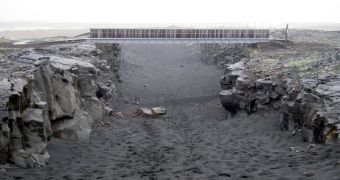This may seem good news for people living in areas with increased seismic activity; however, it is anything but good. A new study involving the Earth past geological activity suggests that the plate tectonics could have come to a complete halt somewhere about 30 to 50 million years ago, and may do so in a distant future.
Plate tectonics are driven by the heat convection process, which takes place in the inner regions of our planet. The movement experienced by the plate tectonics represents a form of evacuating the heat rising from the Earth's core, by converting it into mechanical work. As they collide with one another, they create so-called subduction zones in which one of the plate tectonics is forced to subside under another, while the previous rises on top of the first. The second component of the plate tectonics movement determines some to move away from each other creating spreading ridges or rifts.
Most of the Earth's current geography was created as a result of such movements, like mountain ranges, ocean basins and others. The large majority of the subduction zones are located under forming deep oceanic trenches, such as the Mariana Trench, which is more than eleven kilometers below the sea level. Subduction zones also house the large majority of active volcanoes and areas with increased seismic activity.
Mark Behn, from the Woods Hole Oceanographic Institution, along with Paul Silver, of the Carnegie Institution's Department of Terrestrial Magnetism, argue that the event may take place about 350 million years into the future, when the Pacific ocean is thought to close, as the American and the Eurasian plate tectonics move towards each other. During this process, most of the subduction zones of the Earth will disappear along with the Pacific ocean.
This period of calm observed in the Earth's geological activity is further supported by evidence of igneous rocks originating in volcanoes, during subduction processes. The theory is in relative concordance with the previous ones, which implied the merging of all land masses into a supercontinent known in geological terms as Rodinia, which also suggests a temporary closure of most of the subduction zones that stopped as the continents resumed their movement and, finally, broke apart.
Periodical halts in the movement of the plate tectonics could also explain why the Earth's core has lost less heat over the time than classical theories predicted, and the occurrence of igneous rocks deep within the continents, while they mostly occur in subduction zones.

 14 DAY TRIAL //
14 DAY TRIAL //